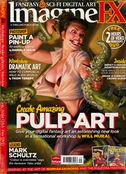
The cover looks kiddish but this is an easy-to-understand, practical and informative book for those interested in creating a graphic novel.
Covers the how-tos of scripting, creating characters, plots, layouts.
It's not a very in-depth book but it doesn't have to be. Seems it's targeted at teens. Nonetheless I found this very insightful. I thought it covered the essentials.
Tips may seem somewhat simple but somehow they don't seem lightweight. Maybe because every piece of advise is steeped in practical experience.
Like turning off the overly critical voice that casts negativity to the whole creative process (So true! The creative craft is hard enough as it is).
Far from making motherhood statements, the advice are like timely reminders:
"Writing is rewriting. It is a rare writer who gets it on the first try."
The parts that were most practical for me:
Creating a profile of your character (e.. name, age, parents, siblings, describe the childhood, education, home life, employment, leisure activities, clothes, personal characteristics, love life, best friend, favourite colour, room mate... etc).
The "How to Plot" portion, much like working out a Gantt Chart for graphic novelists.
- Colour-code each character (e.g. post-it notes).
- Create columns, with each column representing chapters.
- Write the scene/ idea/ dialogue for each character on the coloured note.
- Place the note in each column (i.e. chapter).
Doing the above means the author is able to track the plot/ sub-plot, as "lived out" by each character, according to the chapters.
Brilliant.
The author's website, here.

